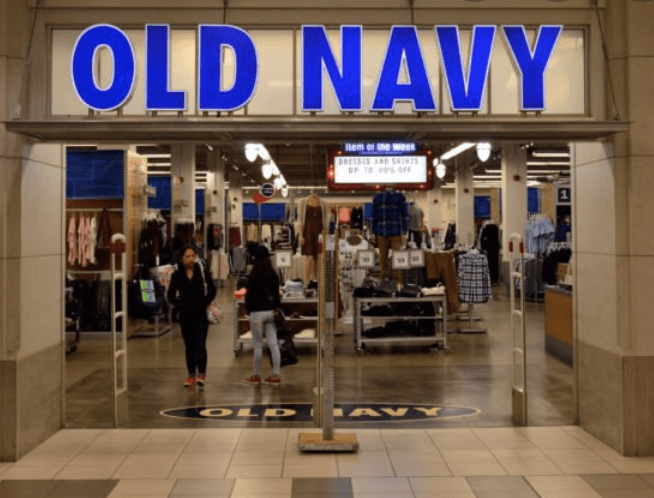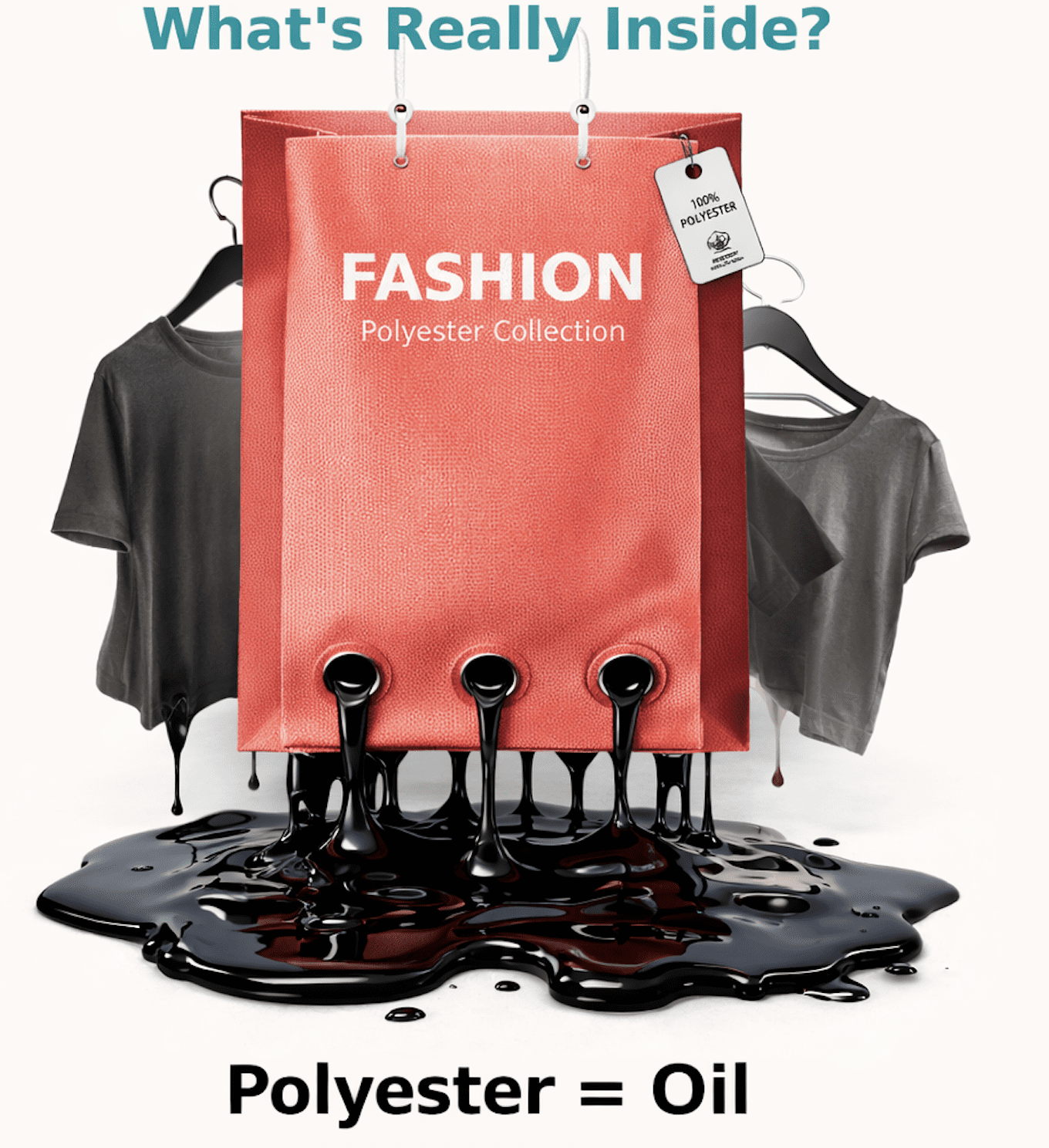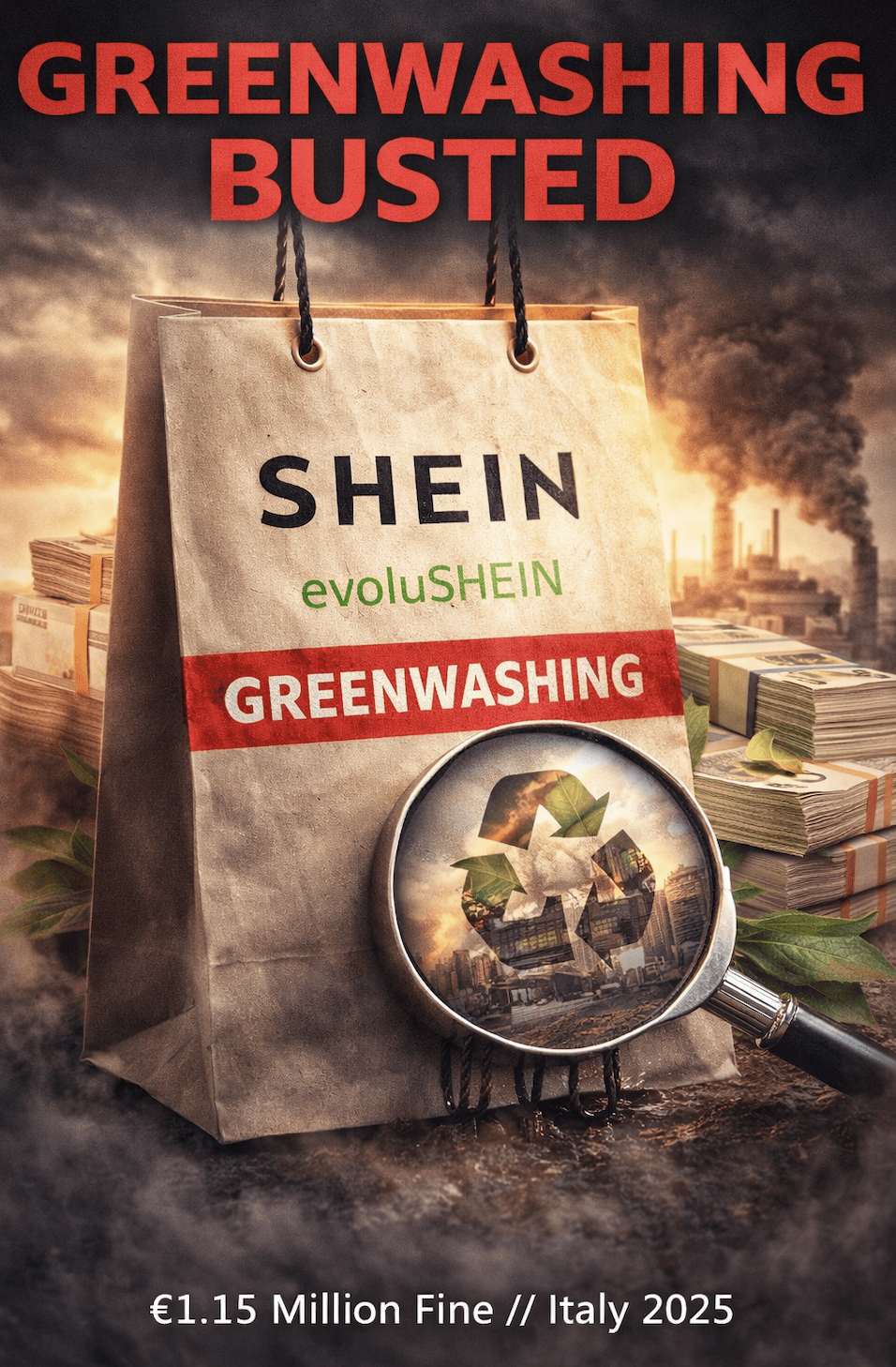No, they are not sustainable. The brand mass produces cheaper clothing for men, women and children. Most of Old Navy’s clothes are low-priced with basic tees starting from $8 – $12 and their jeans ranging from $30-$50.
Old Navy has been spotlighting their sustainable goals on a great looking webpage saying “Smile, we’re going greener”. They make promises to eliminate plastic shopping bags, make 100% of their denim with water-saving techniques and to have 85% of the fibers in their clothing more sustainable by 2025. All great goals, but they do not give a lot of details about how they plan to make those goals happen. And I don’t see a lot of transparency on their website about their supply chains.
If you check out their website or Google Old Navy, you’ll read all kinds of good news about what they are doing to become a better corporate citizen. They’ve made news recently about becoming size inclusive and for donating $30 million dollars worth of clothing for struggling families affected by COVID.
While I applaud their efforts on size inclusivity and giving back to communities, I personally feel they need to be more aggressive about sustainability and apparently I’m not alone.

Old Navy’s History
Old Navy is an American clothing and accessories company owned by the multinational corporation Gap. Inc. The brand is named after a bar in Paris and it prides itself on being a “less expensive” version of Gap. It opened it’s first store in 1994.
Gap Inc., headquartered in San Francisco, also owns Gap (duh), Banana Republic, Athleta and Hill City. Old Navy has more than 1100 stores in the US.
Old Navy’s Transparency about its efforts
Overall, the Fashion Transparency Index rated Old Navy a 44 out of 100 in 2022. In general, brands with a score similar to it can be expected to publish detailed information about policies, procedures, and goals – which they scored highly on (86/100) – and can be expected to be a little more active on energy use, environmental impact, and waste.
Old Navy’s supply chain and environmental impact
Outside sources say Old Navy’s sustainable goals are “It’s a start”. Good On You gave Old Navy an improved grade because the brand has been using recycled materials to produce their clothing and they’ve demonstrated leadership in managing water use in its supply chain.
The Fashion Transparency Index scored Old Navy at 36/100 for traceability in its supply chain, being middle of the pack at disclosing details about where their clothes are processed and made, but scoring a 5/100 in terms of knowing where they get their raw materials.
Although the Old Navy has made goals to reduce their greenhouse gas emissions, there is no real evidence they are on target to meet those goals, and the Fashion Transparency Index gave them a 33/100 rating for climate change and biodiversity.
Old Navy’s labor conditions
Their labor conditions ratings are going in the wrong direction, from “it’s a start” by Good On You to “not good enough” because their current labor standards are not safe and they haven’t made an effort to make sure workers are being paid a fair wage. The Fashion Transparency Index backs this up, giving them an overall 7/100 and an 11/100 on paying living wages.
Animal welfare and Old Navy
Their animal welfare ratings are also going in the wrong direction. Old Navy went from “it’s a start” to “not good enough” because they use leather, wool, and exotic animal hair.
Is Old Navy Fast Fashion?
Old Navy is often considered a fast-fashion brand. Fast fashion refers to the practice of producing inexpensive, trendy clothing quickly and on a large scale. The aim of fast fashion is to offer consumers the latest styles at low prices, with new items introduced frequently to keep up with rapidly changing fashion trends.
Old Navy’s business model aligns with the principles of fast fashion, as the brand offers a wide variety of clothing at affordable prices, with new collections introduced regularly.
Where Does Old Navy Make Its Clothes?
Old Navy manufactures its clothes in countries including China, Bangladesh, Vietnam, Indonesia, India, and Sri Lanka. You can find a full list of the countries The Gap, Old Navy’s parent company, sources its clothes from here.
Old Navy’s Sustainability Ratings
Outside sources say Old Navy’s sustainable goals are “it’s a start”. Good On You gave Old Navy an improved grade because the brand has been using recycled materials to produce their clothing and they’ve demonstrated leadership in managing water use in its supply chain. Old Navy has made goals to reduce their greenhouse gas emissions, there is no real evidence they are on target to meet those goals.
Their labor conditions ratings are going in the wrong direction, from “it’s a start” by Good On You to “not good enough” because their current labor standards are not safe and they haven’t made an effort to make sure workers are being paid a fair wage.
The animal welfare ratings are also going in the wrong direction. Old Navy went from “it’s a start” to “not good enough” because they use leather, wool, and exotic animal hair.
Old Navy Has Been Accused of Greenwashing
In 2018, Old Navy put out a corporate responsibility report highlighting their progress in sustainability, and emphasizing the importance of women in their company. Unfortunately, there was a lot this report failed to mention.
In September of 2021, Old Navy finally posted who their suppliers were which includes factories in Bangladesh, Cambodia, China, El Salvador, Guatemala, Nicaragua, Philippines, Sri Lanka, etc. More than half of these countries have poor oversight by their government about how workers are treated in factories. They have also stated that they are using ‘better’ cotton in 2020 but Old Navy fails to go into detail about why it’s better and how they want to continue to improve.
Greenwashing is just not cool. This will just make Millennials and Generation Z even more frustrated. If you are going to talk the talk, you better walk the walk. Don’t say anything at all about sustainability, unless you are serious about it.
New Direction for Old Navy
Old Navy is still a powerhouse in retail making $9 billion in sales last year. But the brand is struggling a bit, according to RetailDive. Production shutdowns in Vietnam, high shipping costs, and general supply chain issues have plagued Old Navy like so many in the retail industry. They are also looking for a new CEO. Technically in an inflation heavy environment they should be poised to do well but will they? Generation Z, while they are addicted to trendy and inexpensive fashion, is becoming more aware about the fashion industry’s enormous burden on our planet.
What Old Navy Should Do To Become Sustainable
If I had the ear of the new CEO, I’d make some suggestions. H&M is another inexpensive popular fast fashion brand and they are making more serious changes to become sustainable.
- Keep with your plans to save water, replace plastic bags and invest in better fabrics.
- Make better quality clothing – that will last.
- Invest in American factories and American workers. Pay them well, treat them fairly.
- Invest in textiles of the future. Be the first fast fashion brand to decide to make clothes so they are truly disposable — meaning they are biodegradable, not so cheap you wear them once and dispose of them.
- Solar panels on your factories
- Be transparent. If you can’t make changes quickly – that’s okay. Tell people it’ll take a bit. It’s not like turning a light switch on. It’s hard work and takes serious thinking.
Those are some of my suggestions.
Sustainable Alternatives to Old Navy
Whimsy + Row, Kotn, Fair Indigo and PACT are all sustainable alternatives to Old Navy.
Whimsy + Row
Whimsy + Row is an eco-focused, locally-sourced company that primarily makes its clothes in Los Angeles, with support in St. Louis and India. They produce limited runs of garments using biodegradable and sustainable materials, like organic cotton and TENCEL, strive for zero-waste, and are carbon-neutral.
Kotn
Kotn is a B Corporation that works with smallholder farmers in Egypt to directly source Egyptian cotton, linen, and ECOTEC cotton, much in the same way some restaurants try to be farm-to-table. To support the communities that grow their cotton, they invest in funding their schools.
Fair Indigo
Fair Indigo sources the organic Pima cotton used in its clothing from two family farms in Peru and avoids the use of pesticides to grow the cotton. To help reduce the amount of plastic in the world, they recycle plastic into polyester for their activewear line. They’ve also started a non-profit to invest in the educational opportunities of the children in the communities where their cotton is grown.
PACT
Dubbed “Earth’s Favorite Clothing Company”, PACT is carbon-neutral, reliant on fair trade, and uses organic cotton, a biodegradable material. The company sells clothes for women, men, and kids, as well as bedding and towels.
Let’s hope Old Navy meets their goals and gets aggressive about sustainability. In the meantime, the best way to buy clothes at Old Navy and have a good conscious is to buy their clothes from Goodwill.
In the meantime, Old Navy, I’d love to work. Contact me, but not until you are super serious about sustainability.
How to Contact Lexy Silverstein?

If you have any questions, please contact me at LexySilverstein@gmail.com.
Follow me on my socials: Instagram:@lexysilverstein Youtube: Lexy Silverstein Twitter:@eLEXYfy TikTok: @lexysilverstein Facebook: Lexy Silverstein Liketoknow.it/lexysilverstein










